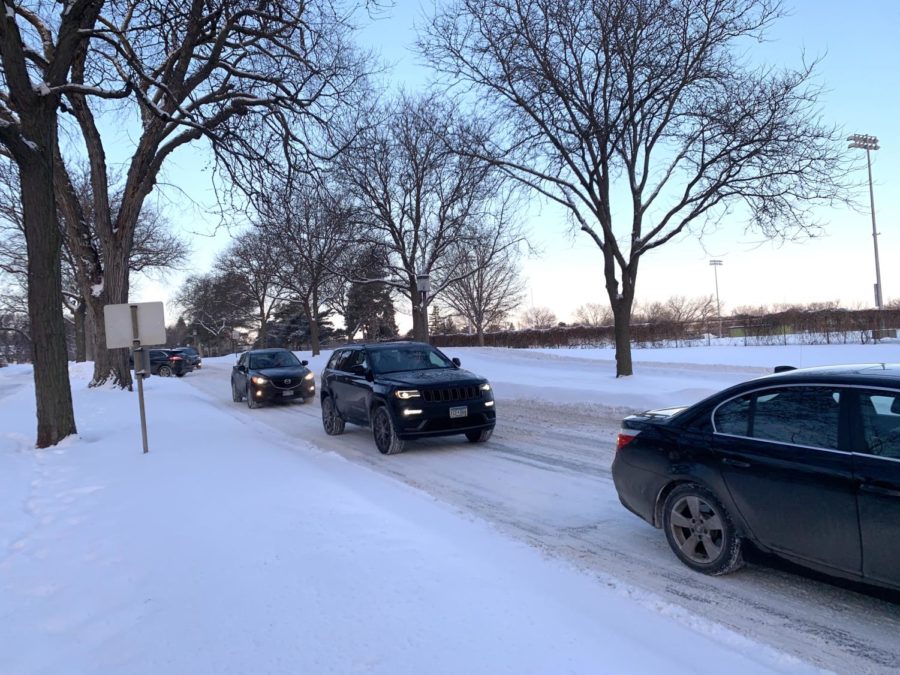Winter Conditions Bring About Longer Commutes
Students speak on changes in driving to school, road conditions
Driving to school and long, cold commutes aren’t just relevant to those who are licensed. Underclassmen, like Geneva Stockton ‘25, are often driven to school by their siblings. Stockton shares,“ I fall asleep in the car, so I like the fact that I’m not the one driving.”
Winter is good for a lot of things: it provides the perfect climate for winter activities such as skiing and skating, it cools us off after hot and humid Minnesota summers, and it gives us all an excuse to curl up and watch movies all day. One thing it is not good for, however, is driving. Every winter, morning commutes to school seem to drag on, the traffic is annoying and the roads are usually slippery. But is this extended commute time a real reflection of the season or is it just perception?
Science teacher Will Bohrnsen lives around 45 minutes from school in the Delano area and has two different ways to get to school. He explains that unless there is ice and snow his winter commute isn’t too much longer than in other seasons but crucially when there is a heavy snowfall his commute can double.
Daphne Dresner ’24, lives extremely close to school. However, she similarly experiences varying conditions depending on the season. Whether it’s snow, rain or shine she drives down a big hill to get to school and explains that it still is more dangerous to drive in the winter. She describes, “The hills in this neighborhood are really really steep and windy and they get really icy in the wintertime because the plows don’t always come through. It can be really dangerous to go up and down those I mean I’ve slid, I think we’ve all slid on those hills my parents slide all the time so it’s definitely more dangerous to drive in the winter.”
While Bohrnsen and Dresner have drastically different commute times, most students fall somewhere in the middle. While they usually have to take the freeway which can expose them to additional dangers, it typically takes less than 45 minutes. One such student is Jonah Yousha ’24 who lives in the Minnetonka/Hopkins area about 10-15 minutes away from the Northrup campus. He details, “I would say based on the weather it’s usually about five minutes longer [in the winter] because…well one, traffic is worse and two, you want to drive slower because you want more control over the car.”
He furthers that in total his commute is longer because he warms up the car before school for around ten minutes, something his dad aptly titled, “waking up the car” and tries to get to school earlier to avoid any collisions and traffic in the student parking lot. He explains, “My brother and I switch off who drives and I always tell him ‘lets try and get there early so the parking lot isn’t crowded when we get there’ because I feel like that’s where a lot of accidents happen.” No matter the distance from one’s house to school, winter’s gift of snow and ice seems to add additional time and some stress onto everyone’s commutes so staying aware of surroundings and road conditions is vital until the snow starts to melt again.

Hi, my name is Zoey and I am a senior this year. Last semester, I served as the Variety Editor and I am also a Co-Editor-in-Chief. Last year I was the...

Hi, I'm Rowan. This year, I am a senior and current Editor-in-Chief at The Spectrum. My favorite part of journalism is designing pages and the interviewing...






